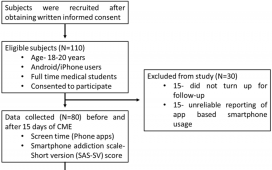Abstract
Background: After a lower-extremity fracture, the patient’s priority is to regain function. To date, our ability to measure function has been limited. However, high-fidelity sensors in smartphones continuously measure mobility, providing an expansive pre- and post-injury gait history. We assessed whether pre-injury mobility data, combined with demographic and injury data, reliably predicted post-fracture mobility.
Methods: We enrolled 107 adult patients (mean age, 45 years; 43% female, 62% White, 36% Black, 1% Asian, 1% more than one race) ≥6 months after the surgical treatment of a lower-extremity fracture. Consenting patients exported their Apple iPhone mobility metrics, including step count, walking speed, step length, walking asymmetry, and double-support time. We integrated these mobility measures with demographic and injury data. Using nonlinear modeling, we assessed whether pre-injury mobility metrics combined with baseline data predicted post-fracture mobility.
Results: All models were well calibrated and had model fits ranging from an adjusted R2 of 0.18 (walking asymmetry) to 0.61 (double-support time). Pre-injury function strongly predicted post-injury mobility in all models. After the injury, the average daily step count increased by 65 steps each week (95% confidence interval [CI], 56 to 75). Weekly gains were significantly greater within 6 weeks after the injury (92 daily steps per week; 95% CI, 58 to 127) than 20 to 26 weeks post-injury (19 daily steps per week; 95% CI, 11 to 27; p
Conclusions: These proof-of-concept findings highlight the value of high-fidelity pre-injury mobility data in predicting recovery. Individualized recovery projections can provide patient-friendly counseling tools and useful clinical insight for surgeons.
Level of Evidence: Prognostic Level III. See Instructions for Authors for a complete description of levels of evidence.










